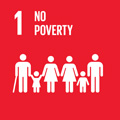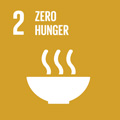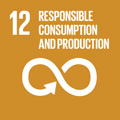- Docente: Fulvio Pezzarossa
- Credits: 6
- SSD: L-FIL-LET/14
- Language: Italian
- Teaching Mode: Traditional lectures
- Campus: Bologna
-
Corso:
Second cycle degree programme (LM) in
Italian Culture and Language for Foreigners (cod. 0983)
Also valid for Second cycle degree programme (LM) in Modern, Post-Colonial and Comparative Literatures (cod. 0981)
Second cycle degree programme (LM) in Italian Studies, European Literary Cultures, Linguistics (cod. 9220)
Learning outcomes
At the end of the course students will have gained a basic knowledge of the functioning of literary institutions, of the relationship between text and context, of the dynamics of literary communication and its political, ideological, socio-economic and editorial influences. Students will also learn how to use critical tools of sociology of literature, with a special focus on the thematic and sociological components of literary texts.
Course contents
PIZZA AND COUSCOUS. WHAT DO MIGRANTS EAT?
Because of the growing presence of immigrants on our territory, Italy is no longer a mono-dimensional country where geographic boundaries and national identity coincide. In the cultural sphere, the cross-contamination between new identities and cultures has given rise to a flourishing literary production, remarkable for both its size and quality.
In these works, food acquires a symbolic and cultural value for characters torn between home-sickness and the desire to experience their new country, between unexpected flavors and the longing for well-known recipes. The same “culinary uneasiness” marked the experience of thousands of Italian immigrants, who reacted to it by creating a sort of mythical national cuisine.
This course focuses on the close-reading of literary texts composed in Italian by both “old” and “new” migrants, who describe a culinary métissage where globally-known dishes like pizza and couscous, spaghetti and kebab – just as the simple act of eating together – constitute a tasty antidote against prejudice, as well as an effective means of meeting other people and enjoying diversity.
Readings/Bibliography
See Italian Syllabus.
Teaching methods
The 30-hour course (consisting a series of lectures in Italian) will take place in the 2nd Semester starting from 20 February 2019 in the Aula PASCOLI, Dipartimento di Filologia Classica e Italianistica, Via Zamboni 32.
Wednesdays, Thursdays and Fridays, 11:15-12:45
Assessment methods
Students will be assessed by oral examination.
The evaluation of the competences acquired during the course consists of an oral interview which has the aim of appraising the students’ critical and methodological abilities. Students will be invited to discuss the texts included in the teaching programme. Students will have to show an appropriate knowledge of the bibliography detailed in the reading list.
Top marks will be awarded to students showing a wide and systematic understanding of the issues covered in class, but also capable of using these notions critically to elaborate clear and relevant analyses through an appropriate vocabulary.
Average marks will be awarded to students showing a mostly mnemonic knowledge of the subject matter, a moderate ability to summarize and elaborate on key topics and using a correct vocabulary, though not always relevant.
A superficial knowledge and understanding of the primary sources and related bibliography, accompanied by scarce analytical and expressive competences, will be rewarded with a pass mark or just above.
Students showing significant gaps in their knowledge of the subject matter and related bibliography and/or expressing in a confused and inappropriate way will not be given a pass mark.
Teaching tools
Video projector, overhead projector, videos, web resources.
Meetings with international experts and authors that write on migration issues.
Office hours
See the website of Fulvio Pezzarossa
SDGs




This teaching activity contributes to the achievement of the Sustainable Development Goals of the UN 2030 Agenda.
